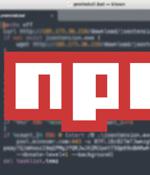Security News

Cybersecurity researchers have disclosed a security flaw in the Linux Kernel's Transparent Inter Process Communication module that could potentially be leveraged both locally as well as remotely to execute arbitrary code within the kernel and take control of vulnerable machines. Tracked as CVE-2021-43267, the heap overflow vulnerability "Can be exploited locally or remotely within a network to gain kernel privileges, and would allow an attacker to compromise the entire system," cybersecurity firm SentinelOne said in a report published today and shared with The Hacker News.

Cybersecurity researchers have disclosed a security flaw in the Linux Kernel's Transparent Inter Process Communication module that could potentially be leveraged both locally as well as remotely to execute arbitrary code within the kernel and take control of vulnerable machines. The heap overflow vulnerability "Can be exploited locally or remotely within a network to gain kernel privileges, and would allow an attacker to compromise the entire system," cybersecurity firm SentinelOne said in a report published today and shared with The Hacker News.
![S3 Ep57: Europol v. Ransomware, Shrootless bug, and Linux browser flamewars [Podcast]](/static/build/img/news/s3-ep57-europol-v-ransomware-shrootless-bug-and-linux-browser-flamewars-podcast-small.jpg)
LISTEN NOW. Click-and-drag on the soundwaves below to skip to any point in the podcast. WHERE TO FIND THE PODCAST ONLINE. You can listen to us on Soundcloud, Apple Podcasts, Google Podcasts, Spotify, Stitcher and anywhere that good podcasts are found.

According to SentinelOne's SentinelLabs, the bug in question specifically resides in a message type that allows nodes to send cryptographic keys to each other. According to the researcher, that common header contains a "Header size" allocation, which is the actual header size shifted to the right by two bits; and a "Message size" allocation that is equal to the length of the entire TIPC message.

Microsoft announced today that the Chromium-based Edge web browser is now generally available on the Linux platform via the stable channel. In September 2019, Redmond asked for feedback from Linux users on the release of the Edge browser for Linux to flesh out the requirements needed for an official launch.

Google on Monday announced that it will pay security researchers to find exploits using vulnerabilities, previously remediated or otherwise, over the next three months as part of a new bug bounty program to improve the security of the Linux kernel. To that end, the company is expected to issue rewards worth $31,337 for exploiting privilege escalation in a lab environment for each patched vulnerability, an amount that can climb up to $50,337 for working exploits that take advantage of zero-day flaws in the kernel and other undocumented attack techniques.

The Hive ransomware gang now also encrypts Linux and FreeBSD using new malware variants specifically developed to target these platforms. The ransomware's Linux version also fails to trigger the encryption if executed without root privileges because it attempts to drop the ransom note on compromised devices' root file systems.

We've been using Edge on Linux for quite some time, first in Dev Build form, then in its Beta flavour. As you probably know, Edge no longer has Microsoft's in-house HTML and JavaScript engines at its core, but is based, like many other contemporary browsers, on the Google-derived open source Chromium project.

Microsoft has announced the addition of new live macOS and Linux response capabilities to Defender for Endpoint, the enterprise version of Redmond's Windows 10 Defender antivirus. They are designed to help security operations teams to trigger response actions straight from the live response interface during incident investigations.

Three JavaScript libraries uploaded to the official NPM package repository have been unmasked as crypto-mining malware, once again demonstrating how open-source software package repositories are becoming a lucrative target for executing an array of attacks on Windows, macOS, and Linux systems. The malicious packages in question - named okhsa, klow, and klown - were published by the same developer and falsely claimed to be JavaScript-based user-agent string parsers designed to extract hardware specifics from the "User-Agent" HTTP header.